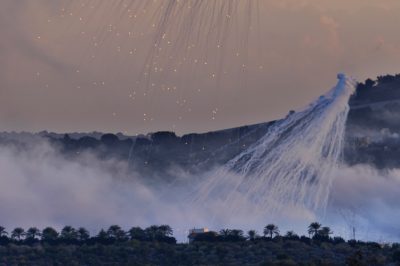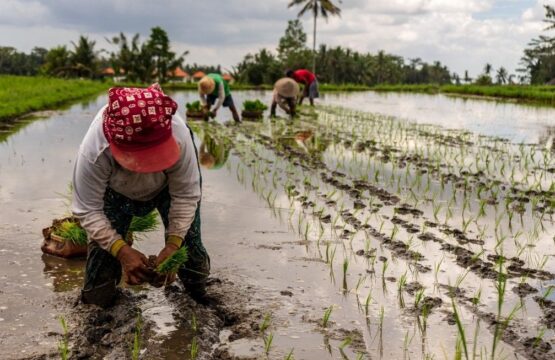Recent reports by Human Rights Watch and Amnesty International have documented the use of white phosphorus munitions by Israel in its military operations, particularly affecting neighboring countries. Between October 10 and 16, 2023, several instances of white phosphorus usage were recorded along the Israel-Lebanon border. These incidents resulted in injuries and property damage in Lebanese border towns such as Dhayra, al-Mari, and Aita al-Chaab.
White phosphorus munitions, known for causing severe burns and respiratory issues, were used to create smokescreens and mark targets. However, their use in populated areas is controversial due to their indiscriminate nature and the severe injuries they inflict on civilians. The dense smoke and intense heat from white phosphorus can ignite fires, leading to long-lasting environmental and health hazards.
Environmental and Health Hazards
White phosphorus can cause both immediate and long-term environmental damage. Upon exposure to air, white phosphorus ignites and produces dense smoke and extreme heat, potentially causing uncontrollable fires. Its residue can severely contaminate soil and water sources. When white phosphorus leaches into rivers and aquifers, it can lead to widespread water pollution. This contamination poses risks to agriculture, as polluted water can poison crops, livestock, and human health, as contaminated food and water sources affect populations dependent on these resources.
Long-term Environmental Impact
Soil and Water Contamination:
- Persistence in Soil: White phosphorus can remain in the soil for years, reducing soil fertility and increasing erosion. This long-term presence hampers agricultural productivity, vital for local economies and food security.
- Water Pollution: Contaminated water sources can poison local crops and livestock, posing significant health risks to human populations consuming the affected food and water. This scenario is especially critical in regions like Gaza, where clean water supplies are already limited.
Also Read: Addressing India-Pakistan relations during economic instability
- Air Pollution: The conflict has led to increased air pollution due to burning solid waste and munitions. The United Nations Environment Programme (UNEP) highlighted the dangers of solid waste burning, which releases hazardous gases and particulate pollutants into the air.
- Greenhouse Gas Emissions: The conflict has contributed to a significant rise in greenhouse gas emissions. In the first 60 days, an estimated 281,000 tonnes of planet-warming gases were released, equivalent to burning at least 150,000 tonnes of coal. This increase exacerbates global warming and impacts regional climate conditions.
Climate Change Implications
The environmental degradation from white phosphorus use adds to climate change’s already severe challenges. The Middle East, including regions affected by these conflicts, is highly vulnerable to climate change, with rising temperatures and decreasing precipitation threatening water availability and agricultural productivity.
The combination of conflict-induced environmental damage and climate change compounds the region’s vulnerability. Managing these issues requires significant investments in infrastructure and sustainable practices to mitigate the long-term impacts on the environment and public health.
Conclusion
The use of white phosphorus munitions in conflict zones like Gaza and southern Lebanon has immediate destructive effects and long-term environmental consequences. These include soil and water contamination, increased greenhouse gas emissions, and broader climate impacts. Addressing these challenges necessitates adherence to international humanitarian laws and significant environmental recovery and climate resilience efforts.
A student of International Relations interested in National Security strategies, with a good focus on Geo-Politics, Foreign Policy, and Public & Cultural Diplomacy.







